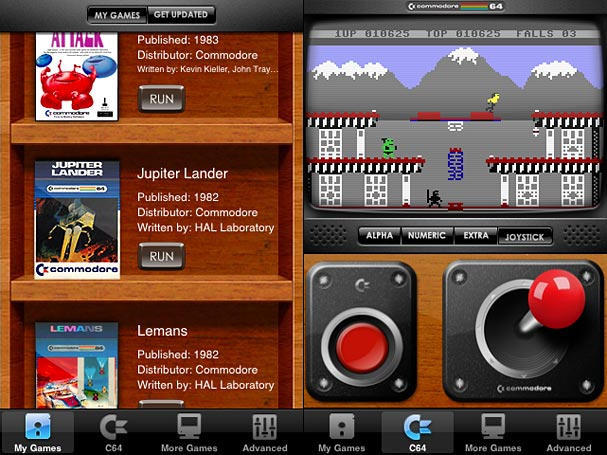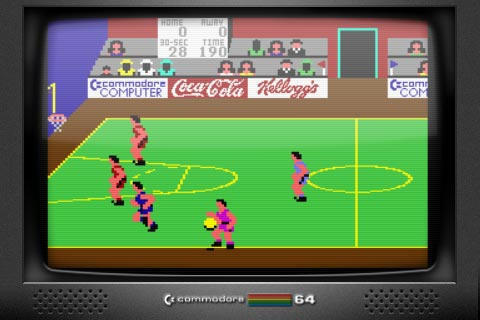Cult of Mac: What does the C64 mean to you, personally?
Stu from Manomio: My first computer was actually an Atari 800XL and this was my introduction to BASIC. I spent many hours entering programs from Compute! magazine in Atari BASIC. My time with the Atari was relatively short-lived, as we switched to a C128D when my father found Swift for CP/M—an early spreadsheet programme. Fortunately for me, the 128D was also a C64 and that’s what my mates and I grew up with through highschool. Therefore, the C64 is a very fond part of my childhood—great times with family and friends.

Why did you decide to try and bring the platform to iPhone?
I wanted to learn about Apple’s new platform—I’d never programmed on OS X before—and I had to select something that would keep me interested through the process and expose some of the device’s challenges, such as performance and the lack of physical buttons.
I had aspirations of bringing C64 to the App Store, but realised that tracking down licenses was going to be a challenge unto itself and the project somewhat died for a time. It was through my blog and YouTube videos that I was contacted by Brian Lyscarz, who had a similar goal to bring the C64 to the iPhone. Not only did he have the aesthetic eye and pixel-pushing skills to visually shape the C64 that you see today, he also had the contacts to secure the licensing deals we needed to legally bring C64 to the App Store. This is why we formed Manomio LLC and became equal partners.
How well does the emulator perform compared to a real machine or emulators like Power64 on a Mac?
The C64 was an incredibly complicated device, and to accurately reproduce all its behaviours and effects requires ‘cycle-exact’ emulation. Cycle-based emulators actually trigger each chip such as the VICII, 6510 and SID on the rise and fall of the virtual clock. As you can imagine, this is an incredibly demanding process for hand-held devices.
For this first release, we opted for line-based emulation, which means each chip receives a time slice equal to a raster line of the C64. In this mode C64 for iPhone performs surprisingly well, and the majority of games work fine. The 6510 CPU runs at 100%. The sound is okay, although die-hard SID fans will argue it’s poor in comparison to other emulators! To emulate the SID accuraltely, particularly for digitised sounds, you’ll need a cycle-exact emulator.



